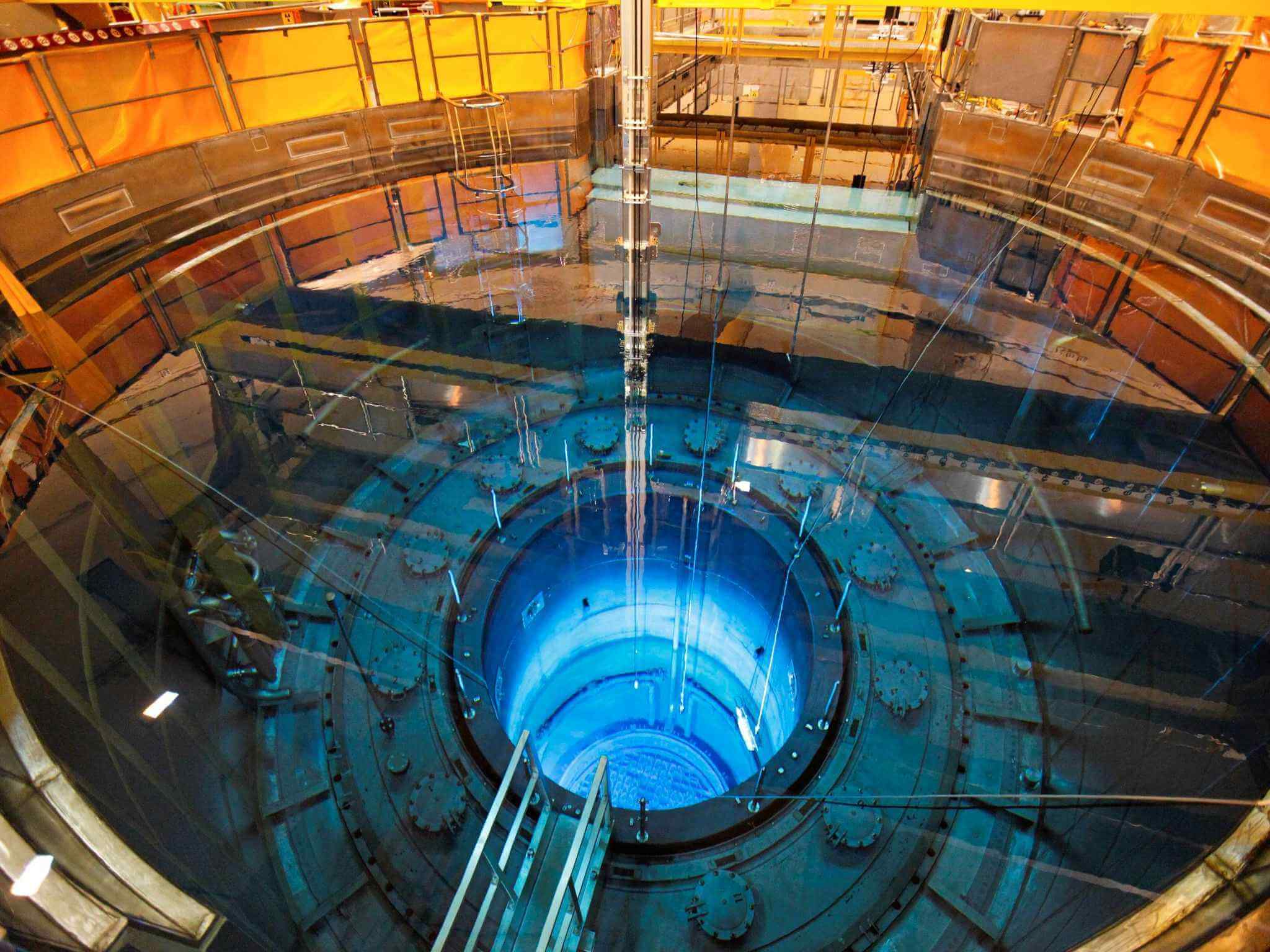Introduction: Powering the Future
India’s journey in nuclear energy has been both remarkable and challenging. The country’s nuclear program has evolved over the years, contributing to its energy security and technological advancements. Here’s a concise introduction to India’s nuclear reactors:
Brief History of Nuclear Reactors in India
- Early Years:
- India’s interest in nuclear science dates back to the 1930s when pioneering physicists like Meghnad Saha conducted research in nuclear physics.
- However, it wasn’t until the 1950s that India began actively exploring nuclear energy for peaceful purposes.
- First Reactor: Apsara:
- In 1956, India achieved a significant milestone by commissioning its first nuclear reactor, Apsara, at the Bhabha Atomic Research Centre (BARC) in Mumbai.
- Apsara was a research reactor used primarily for scientific experiments and neutron activation analysis.
- Tarapur Atomic Power Station:
- In the 1960s, India established the Tarapur Atomic Power Station (TAPS) in Maharashtra, which became the country’s first commercial nuclear power plant.
- TAPS featured two pressurized heavy water reactors (PHWRs) supplied by Canada.
- Indigenous Development:
- India’s commitment to indigenous nuclear technology led to the development of CIRUS (Canada-India Reactor) and DHRUVA reactors at BARC.
- These reactors played a crucial role in advancing nuclear research and producing medical isotopes.
- Pokhran Tests:
- India conducted its first nuclear weapons tests in 1974 at the Pokhran Test Range in Rajasthan.
- These tests, codenamed “Smiling Buddha,” marked India’s entry into the nuclear weapons club.
- Nuclear Power Expansion:
- Over the years, India continued to expand its nuclear power capacity, with reactors at sites like Kalpakkam, Kakrapar, and Rawatbhata.
- The Kudankulam Nuclear Power Plant (KNPP) in Tamil Nadu, with Russian collaboration, is one of India’s largest nuclear facilities.
- Thorium-Based Fuel Cycle:
- India’s unique focus on thorium-based fuels sets it apart globally. The three-stage nuclear program aims to utilize thorium as a sustainable energy source.
- The Prototype Fast Breeder Reactor (PFBR) at Kalpakkam is a significant step in this direction.
- Challenges and Opportunities:
- India faces challenges related to public perception, safety concerns, and international cooperation.
- However, with the ongoing construction of new reactors and research on advanced technologies, India remains committed to harnessing nuclear energy for its growing needs.
Current Nuclear Reactors in India
- Rajasthan (Rawatbhata):
- Located in Rajasthan, the Rawatbhata site houses several reactors.
- These reactors are part of the Rawatbhata Nuclear Power Plant (RNPP).
- Rawatbhata contributes significantly to India’s nuclear power generation capacity.
- Tamil Nadu (Kudankulam; Kalpakkam):
- Tamil Nadu hosts both operational and under-construction reactors.
- Kudankulam Nuclear Power Plant (KNPP):
- KNPP, located in Tamil Nadu, operates two VVER-1000 pressurized water reactors (Russian design).
- These reactors have a combined capacity of 2,000 MW.
- Kalpakkam:
- Kalpakkam is home to several research reactors and the Prototype Fast Breeder Reactor (PFBR).
- PFBR is a significant step toward utilizing thorium-based fuels in India.
- Gujarat (Kakrapar):
- The Kakrapar Atomic Power Station (KAPS) in Gujarat contributes to India’s nuclear power capacity.
- KAPS features pressurized heavy water reactors (PHWRs).
- Uttar Pradesh (Narora):
- Narora, located in Uttar Pradesh, hosts an operational reactor.
- The Narora Atomic Power Station (NAPS) plays a crucial role in meeting energy demands.
- Karnataka (Kaiga):
- Kaiga, situated in Karnataka, is another vital nuclear power hub.
- The Kaiga Generating Station operates PHWRs and contributes to India’s energy mix.
- Maharashtra (Tarapur):
- Tarapur, in Maharashtra, is one of India’s oldest nuclear power sites.
- The Tarapur Atomic Power Station (TAPS) features PHWRs and has been operational since the 1960s.
In summary, India’s current nuclear reactors are strategically distributed across different states, providing a significant portion of the country’s electricity. These reactors play a crucial role in India’s energy security and technological advancements.
Capacity and Generation of India’s Nuclear Reactors
- Total Generation:
- In the fiscal year 2020–21, India’s nuclear reactors collectively produced 43 terawatt-hours (TWh) of electricity.
- This accounts for approximately 3.11% of the country’s total power generation, which reached 1,382 TWh during the same period.
- Availability Factor:
- The availability factor of Indian reactors improved significantly during 2019–2021.
- The availability factor represents the percentage of time a reactor is operational and generating power.
- Achieving an availability factor of 74.4% indicates progress in addressing historical challenges related to reactor downtime and maintenance.
Future Prospects of India’s Nuclear Power

India’s ambitious nuclear energy goals are shaped by scientific advancements, policy decisions, and public opinion. Here are the key points regarding the future prospects:
- Construction of Additional Reactors:
- India is actively constructing 11 more reactors with a combined capacity of 8.7 GW.
- These reactors will contribute significantly to the nation’s energy portfolio and strengthen its position as a nuclear power.
- Capacity Target by 2032:
- Despite challenges and anti-nuclear sentiments, India aims to achieve a nuclear power capacity of 63 GW by 2032.
- This ambitious target reflects the country’s commitment to sustainable energy generation.
- Challenges and Considerations:
- Anti-Nuclear Protests: Public opposition to nuclear projects remains a challenge. Balancing energy needs with safety concerns is crucial.
- Technological Advancements: India continues to invest in research and development to enhance reactor safety, efficiency, and waste management.
Thorium-Based Fuels in India
India’s innovative approach to nuclear energy involves the utilization of thorium, a naturally abundant element, as a fuel source. Here are the key points regarding thorium-based fuels:
- Three-Stage Nuclear Power Program:
- India’s three-stage nuclear power program aims to achieve energy self-sufficiency while minimizing nuclear waste.
- The program consists of three stages: Uranium-Plutonium Cycle, Thorium-Uranium Cycle, and Thorium-Plutonium Cycle.
- Thorium as a Fuel:
- Thorium is abundant in India’s monazite sands. Unlike uranium, it doesn’t require enrichment.
- In the Thorium-Uranium Cycle, thorium-232 absorbs neutrons and converts into fissile uranium-233.
- India’s Pressurized Heavy Water Reactors (PHWRs) use a mix of thorium and low-enriched uranium (LEU) fuel.
- Advantages of Thorium:
- Abundance: India has one of the world’s largest thorium reserves.
- Reduced Proliferation Risk: Thorium-based reactors produce less plutonium, reducing the risk of nuclear weapons proliferation.
- Less Radioactive Waste: Thorium reactors generate less long-lived radioactive waste.
- Challenges and Research:
- Breeding Process: Converting thorium into fissile uranium-233 requires precise breeding.
- Materials Science: Developing materials that can withstand the intense radiation in thorium reactors.
- Economic Viability: Commercializing thorium-based reactors remains a challenge.
Historical Context of India’s Nuclear Program
India’s journey in nuclear science and technology has a rich history. Here are the key points regarding its historical context:
- Early Research and Visionaries:
- During the 1930s, Indian physicists like Meghnad Saha and Homi J. Bhabha conducted groundbreaking research in nuclear physics.
- Their work laid the foundation for India’s future endeavors in harnessing nuclear energy.
- Recognition of Radioactive Ores:
- As early as 1901, the Geological Survey of India recognized the presence of radioactive ores in the country.
- However, little effort was made to exploit these resources until later decades.
- Homi J. Bhabha’s Vision:
- Dr. Homi J. Bhabha, often referred to as the “father of India’s nuclear program,” envisioned a self-reliant nuclear energy sector.
- His vision led to the establishment of the Tata Institute of Fundamental Research (TIFR) and the Atomic Energy Establishment, Trombay (now Bhabha Atomic Research Centre).
- Post-Independence Developments:
- After India’s independence in 1947, the government prioritized scientific research and technological advancements.
- The Indian Atomic Energy Commission (AEC) was formed in 1948 to oversee nuclear research and development.
- Peaceful Use of Nuclear Energy:
- India’s nuclear program focused on peaceful applications, including electricity generation, agriculture, and medicine.
- The Tarapur Atomic Power Station (1969) marked India’s entry into commercial nuclear power.
- Challenges and Achievements:
- Fuel shortages and international sanctions posed challenges, but India persisted.
- The Pokhran-I (1974) and Pokhran-II (1998) nuclear tests demonstrated India’s capabilities.
Conclusion
India has established itself as a significant player in nuclear energy, with a diverse range of reactors such as PHWRs, BWRs, and advanced FBRs. Facilities like Tarapur, Kudankulam, and Kalpakkam showcase India’s technical expertise and commitment to energy security. Emphasizing safety and sustainability, India aims to expand its nuclear capacity through strategic projects and international collaborations, contributing to global efforts to combat climate change and ensuring a reliable energy future.
FAQ’s
Q. What types of nuclear reactors are used in India?
A: India uses various types of nuclear reactors including Pressurized Heavy Water Reactors (PHWRs) and boiling Water Reactors (BWRs), and is developing advanced Fast Breeder Reactors (FBRs) and thorium-based reactors.
Q. What are some of the key nuclear power plants in India?
A: Major nuclear power plants in India include the Tarapur Atomic Power Station, Kudankulam Nuclear Power Plant, Kalpakkam Nuclear Complex, and the Rajasthan Atomic Power Station.
Q. What role do nuclear reactors play in India’s energy mix?
A: Nuclear reactors provide a stable and reliable source of energy, contributing significantly to the national grid and helping to meet the growing energy demands of the country.
Q. What are India’s future plans for nuclear energy?
A: India plans to expand its nuclear capacity through new reactor projects and international collaborations, aiming to increase its nuclear energy output and contribute to global climate change mitigation efforts.












